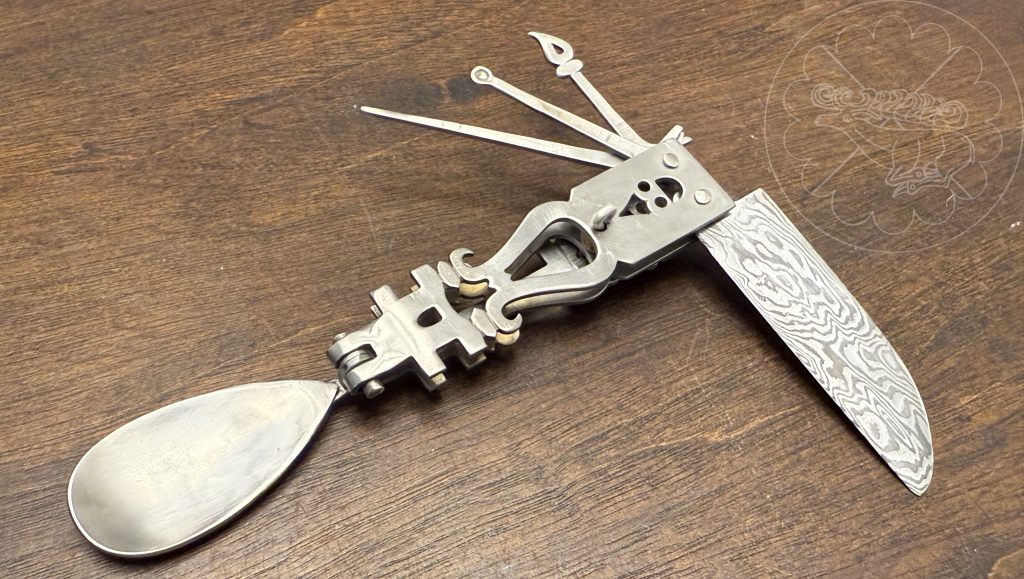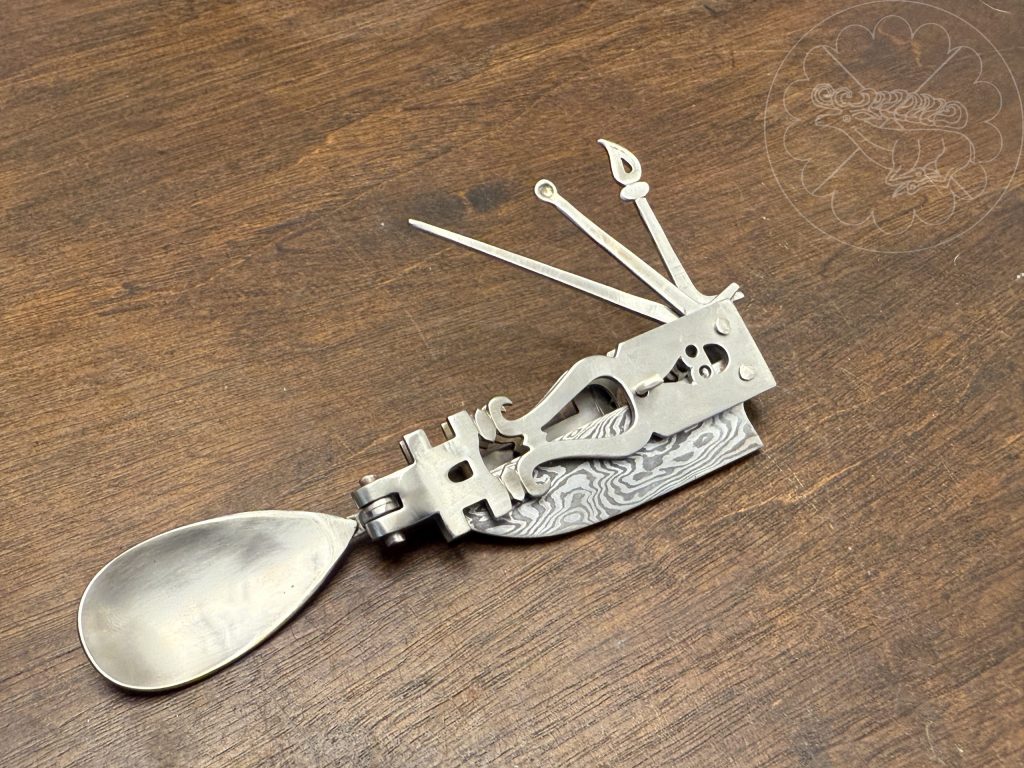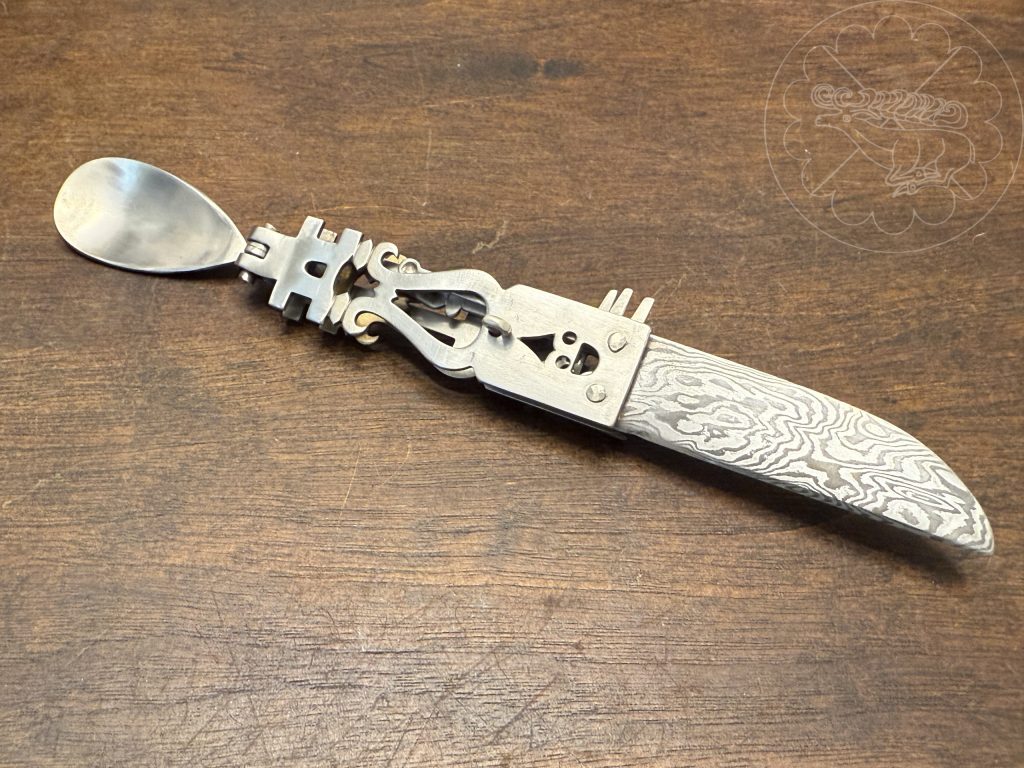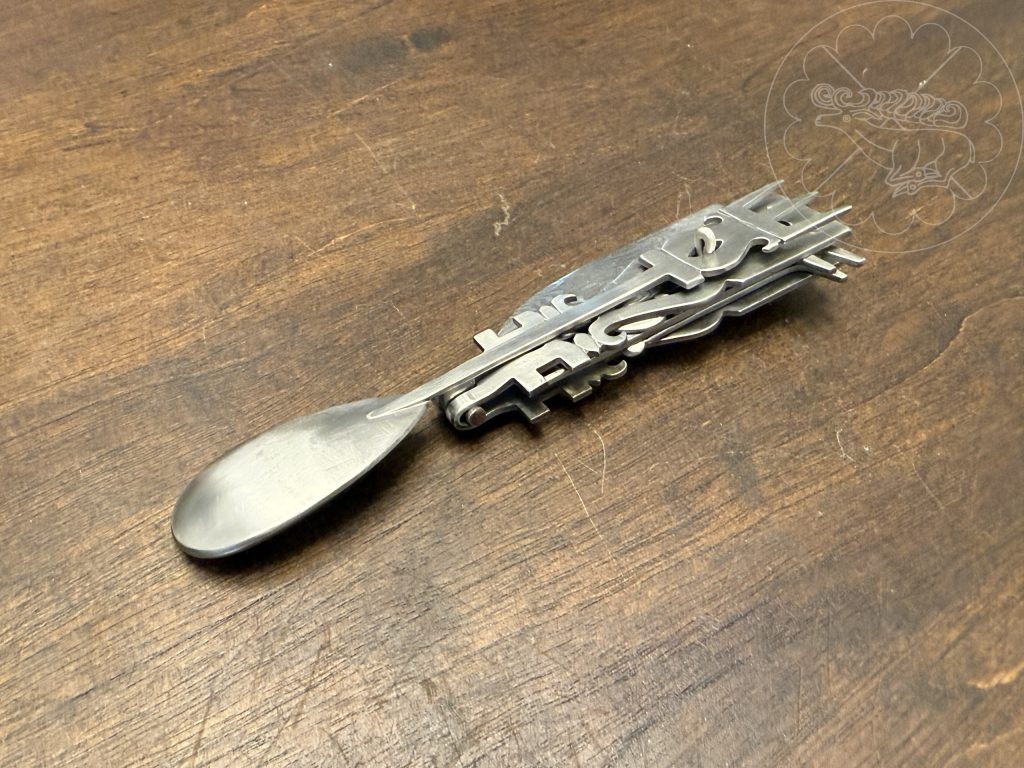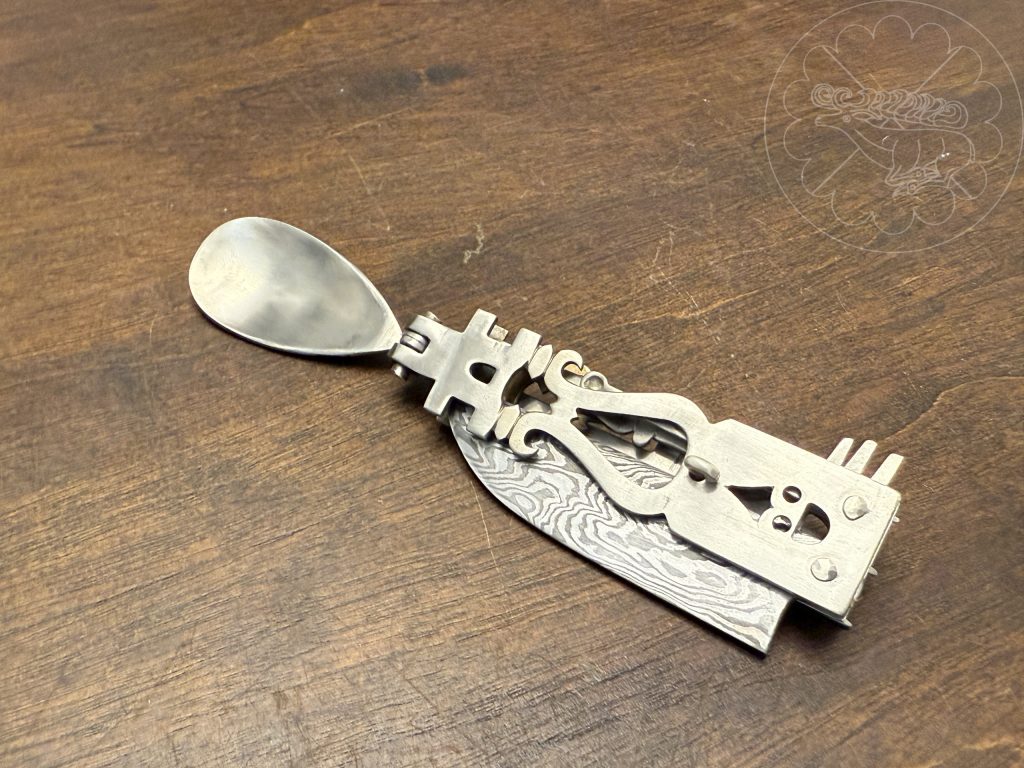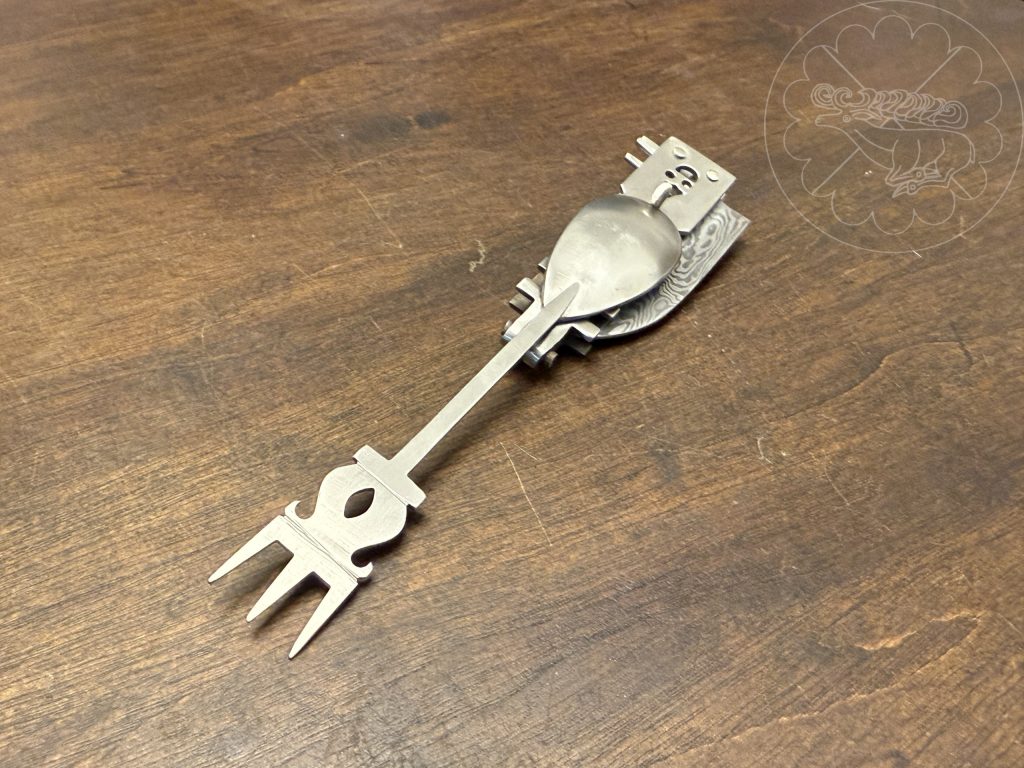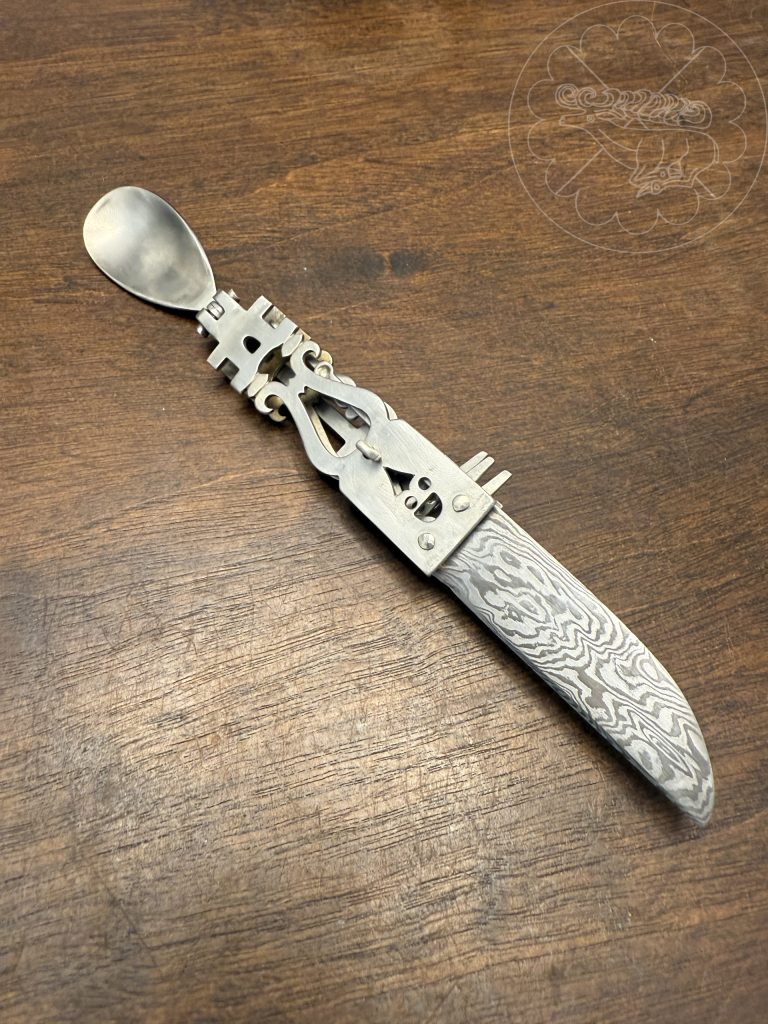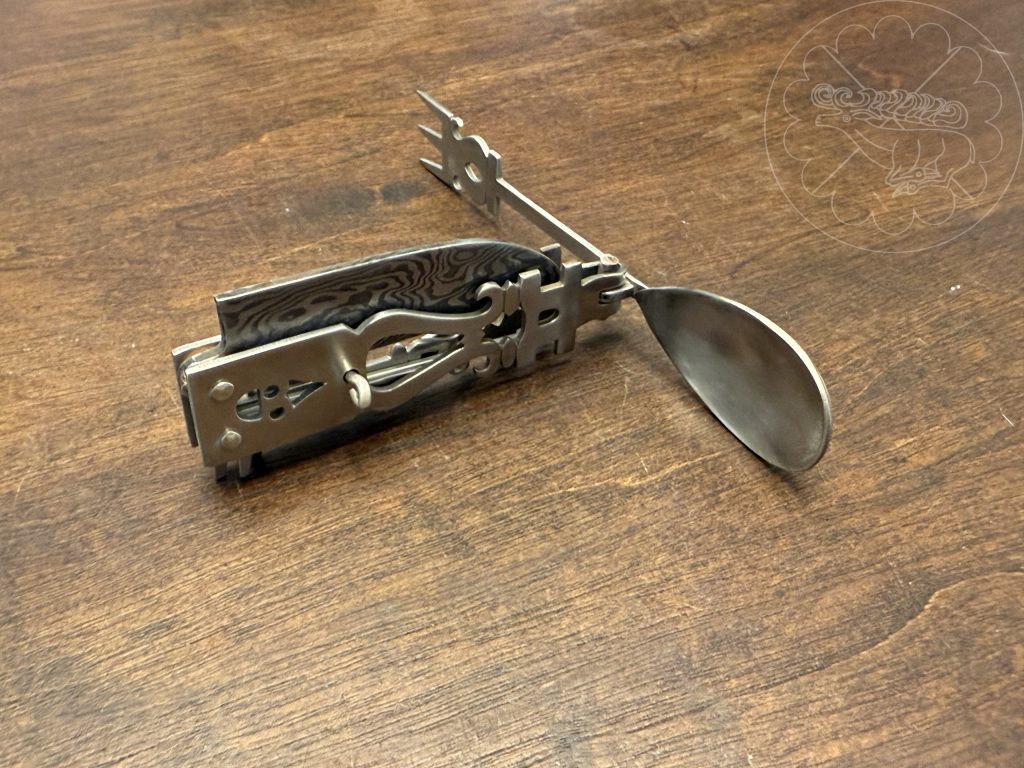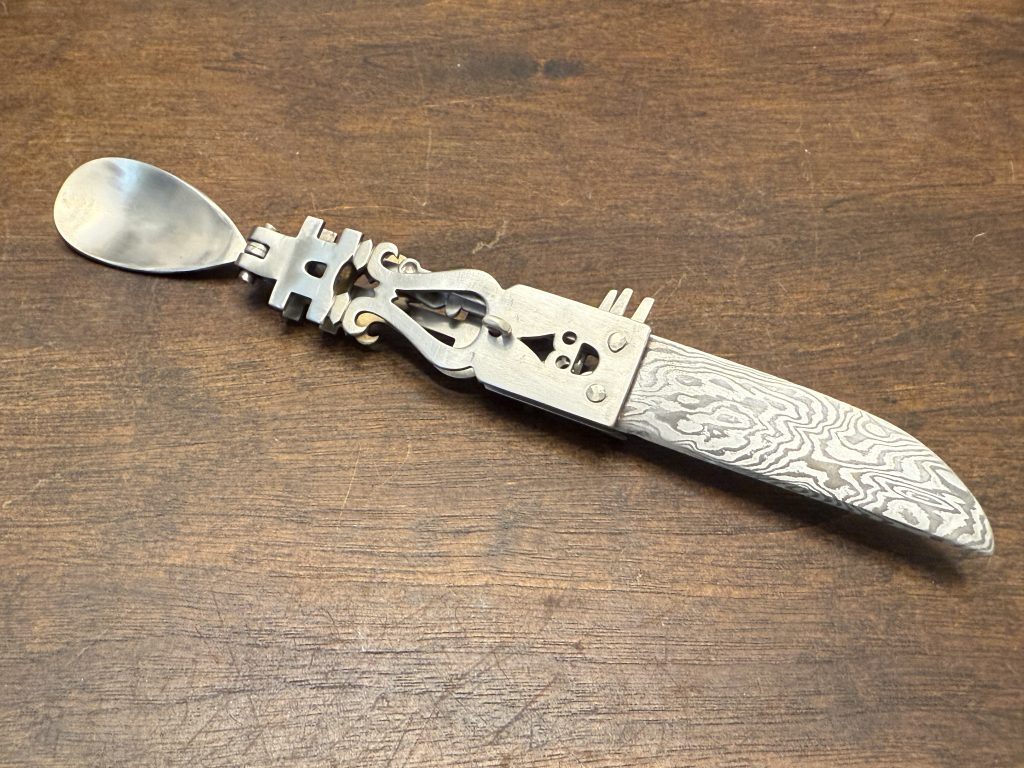
Although my projects generally focus on viking age pieces, there’s lots of fascinating and amazing historical artifacts from many time periods that I take interest in. Several years ago I stumbled upon this 3rd century CE Roman multitool and was intrigued by it. Amazing that this complex piece, so like a modern multitool, was made so long ago.

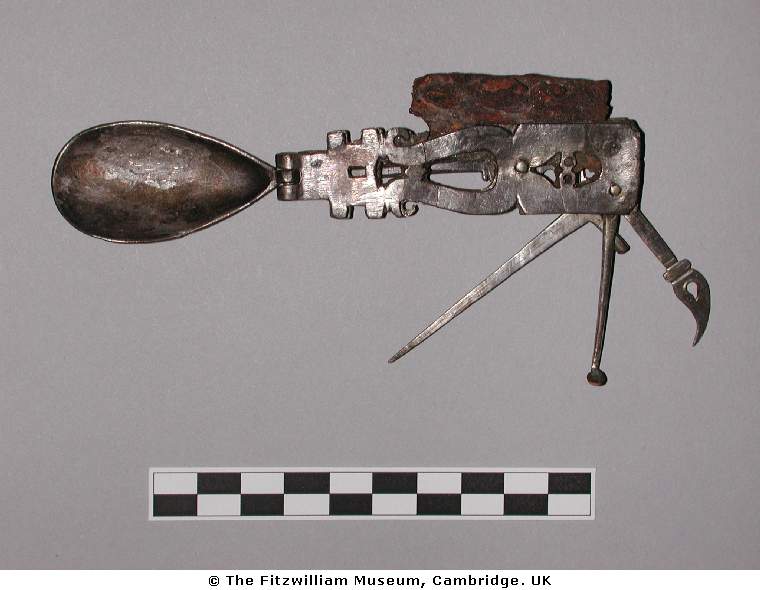
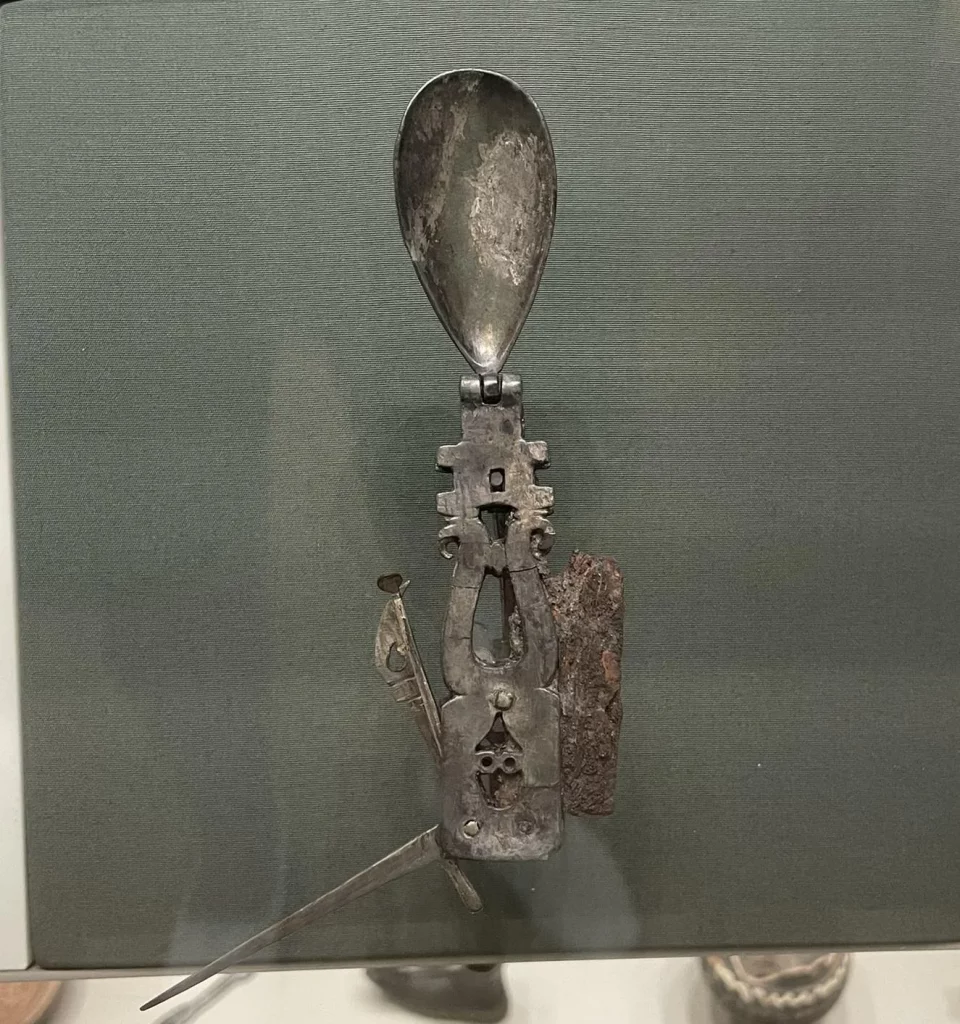

This particular piece is now housed at the Fitzwilliam Museum in Cambridge, there have been similar pieces found in Bulgaria and Liguria in Italy.
The original piece is built from silver with an iron blade, and due to its materials of construction is speculated to have been a status item, rather than a more common tool. It contains an opposing fork and spook which rotate on a pivot and appear to have a mechanism to lock the folded portion of either in place for use. Additionally it contains a folding knife blade, and 3 other tools; a pick or awl, what may be an ear spoon, and a flame shaped tool of unknown function (if the others are personal hygiene tools, this may have been for cleaning under fingernails).
I decided to make a reproduction as a gift to a friend, Count Zachariah de Kane. I had originally thought that I had a large sheet of 14 gauge nickel silver that I planned to use for the project, but after cutting and beginning to form and solder the pieces, it became apparent that it was NOT nickel silver, but actually stainless steel. This posed some additional challenges for the fabrication, but at the end of the day, it ended well with a durable and unique piece that looks good and functions well. Here are the cut pieces before and after forming.
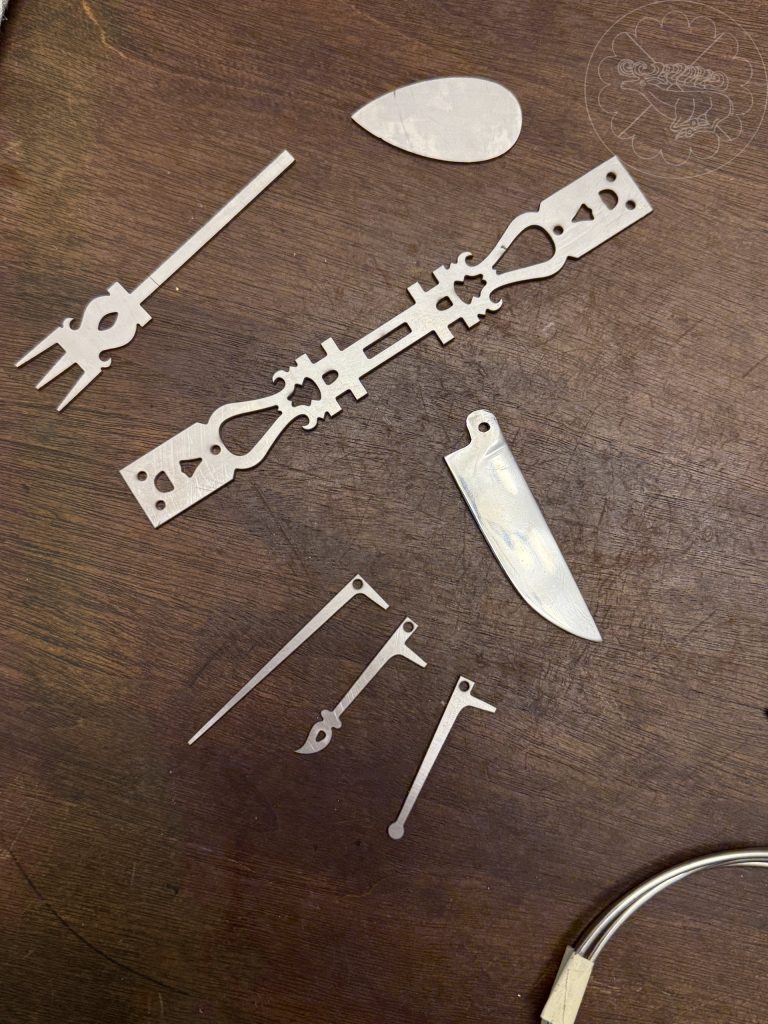
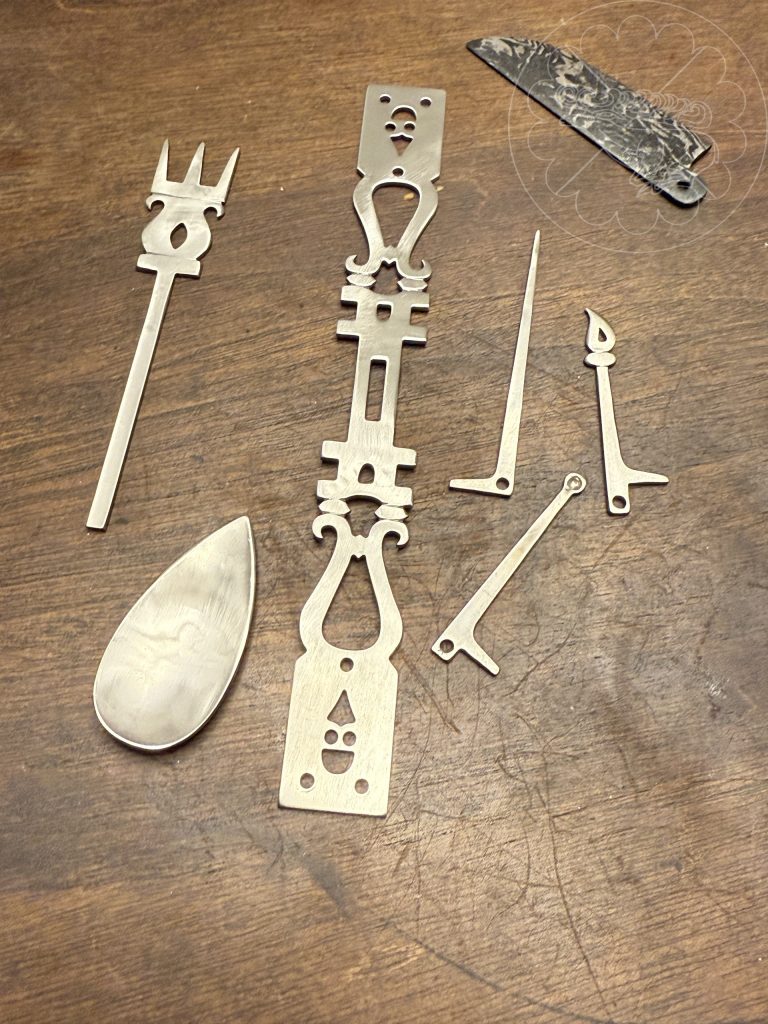
After forming, the fork/spoon was soldered together and a bump was added for the hinge. The length of this piece centered on the hinge is such that the locking pin will pass through the eye in the fork to lock it in place, or right over the very end of the spoon when flipped..
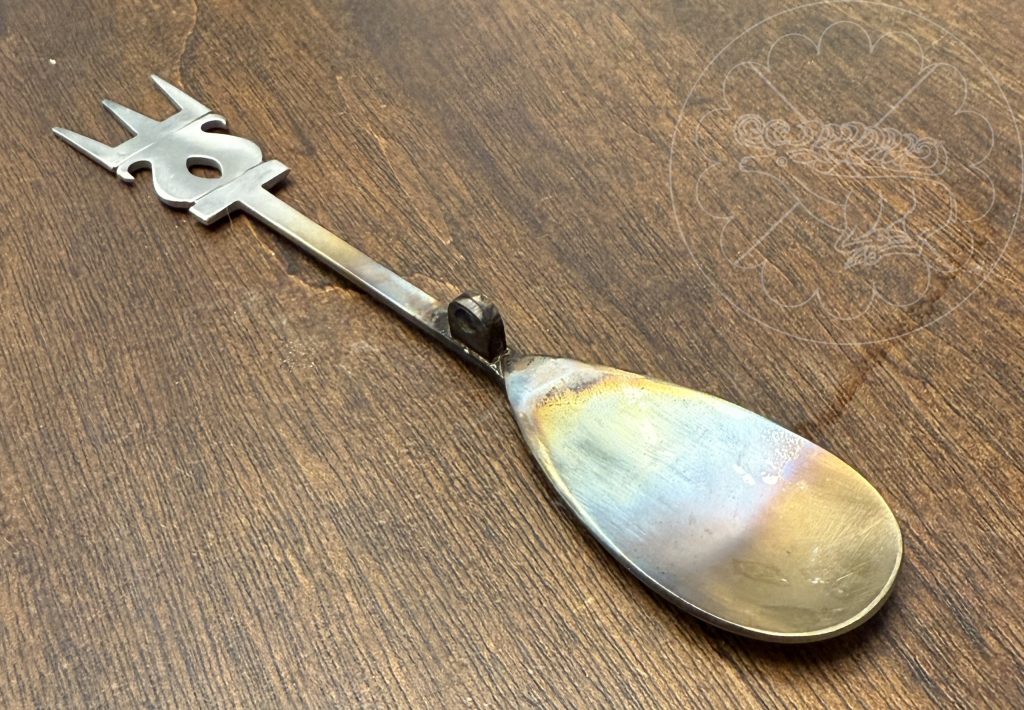
Then the body was folded in half around the hinge pin and tuned to a uniform thickness and attached together. The rivets were made from nickel silver and the hinge pin for the spoon/for and latching piece are both sterling. Here is the whole thing pinned together in a test fit before the rivets were set.
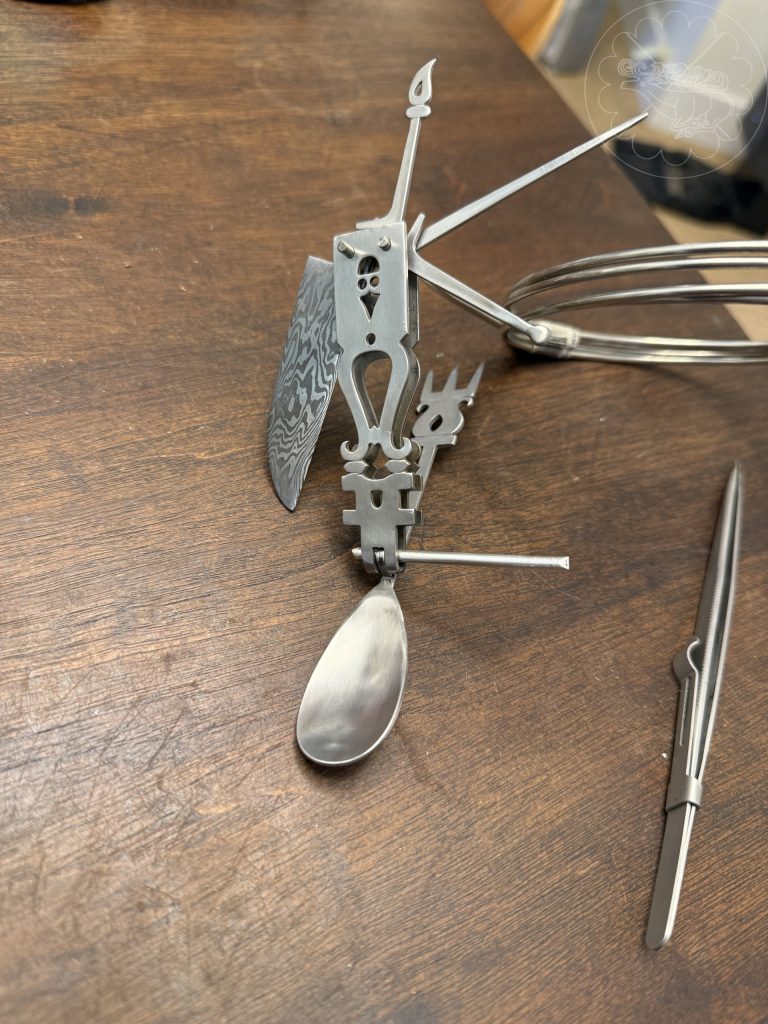
The damascus blade was forged by Eorl Mordygan MacGregor, and the pattern welding adds a distinctive contrast to the rest of the piece and is really visually stunning..
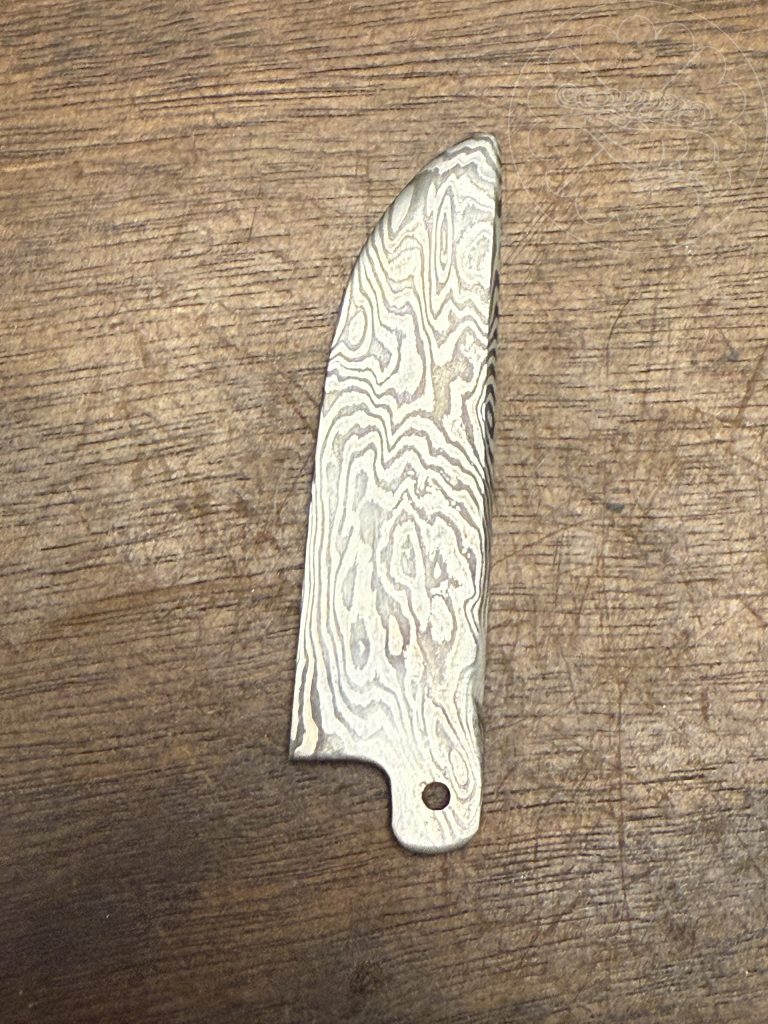
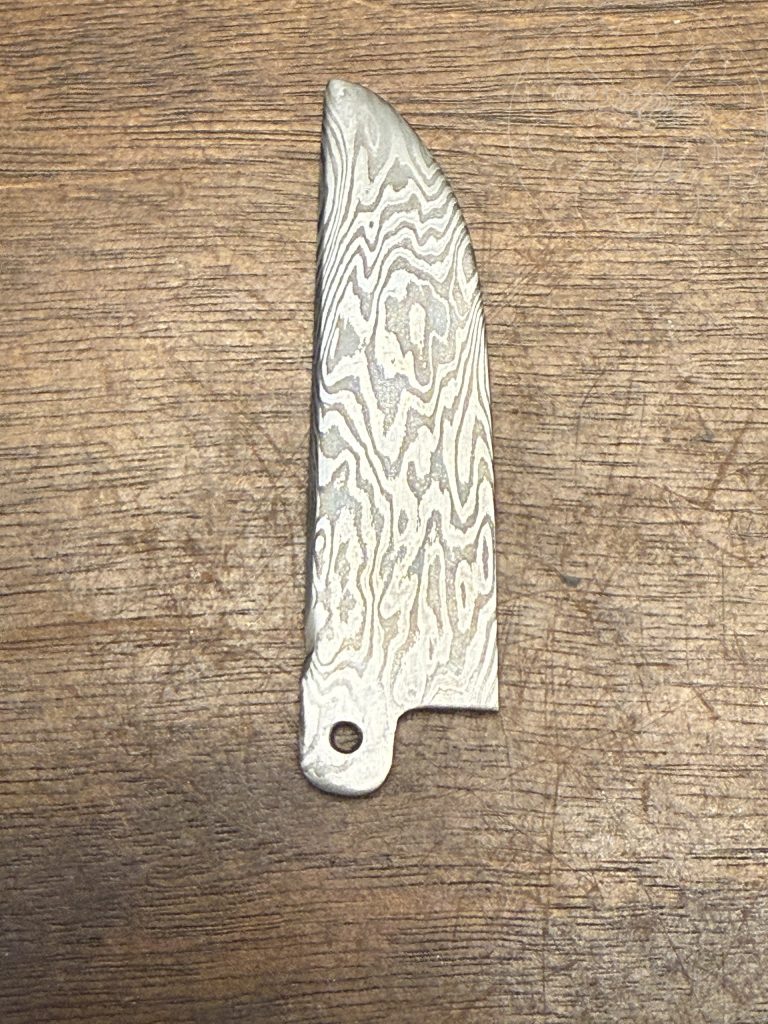
Because the 3 tools are thicker than the blade, spacers/washers were needed to keep the blade centered in the folded frame. I decided to use leather washers, and additionally added a 3rd leather washer to the locking pin to keep the blade from impacting metal when closed.
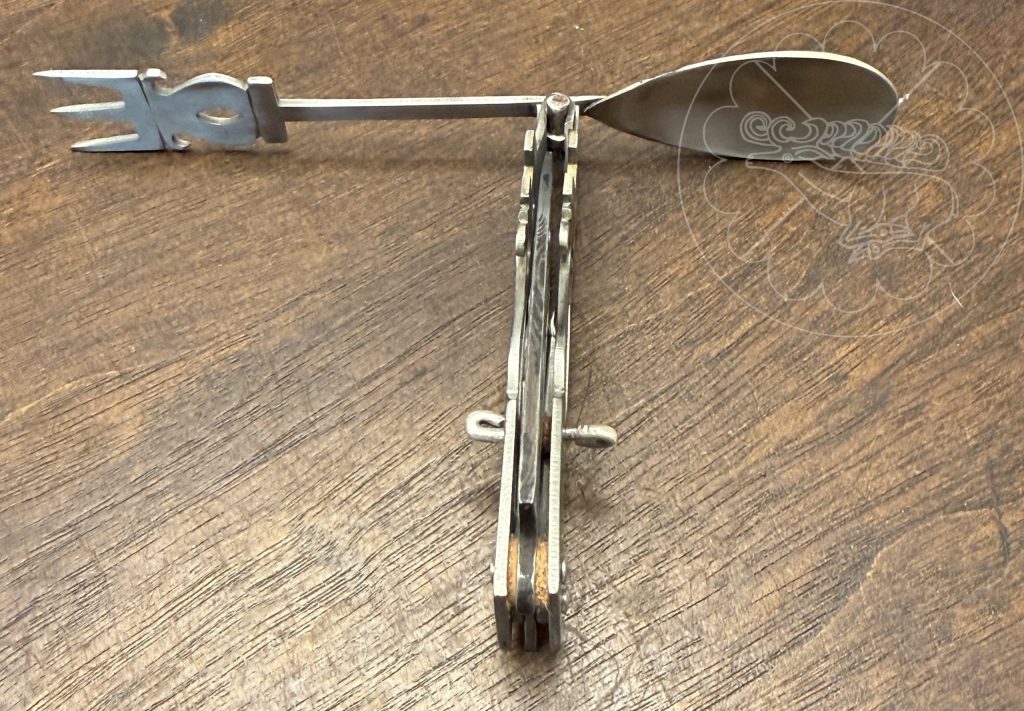
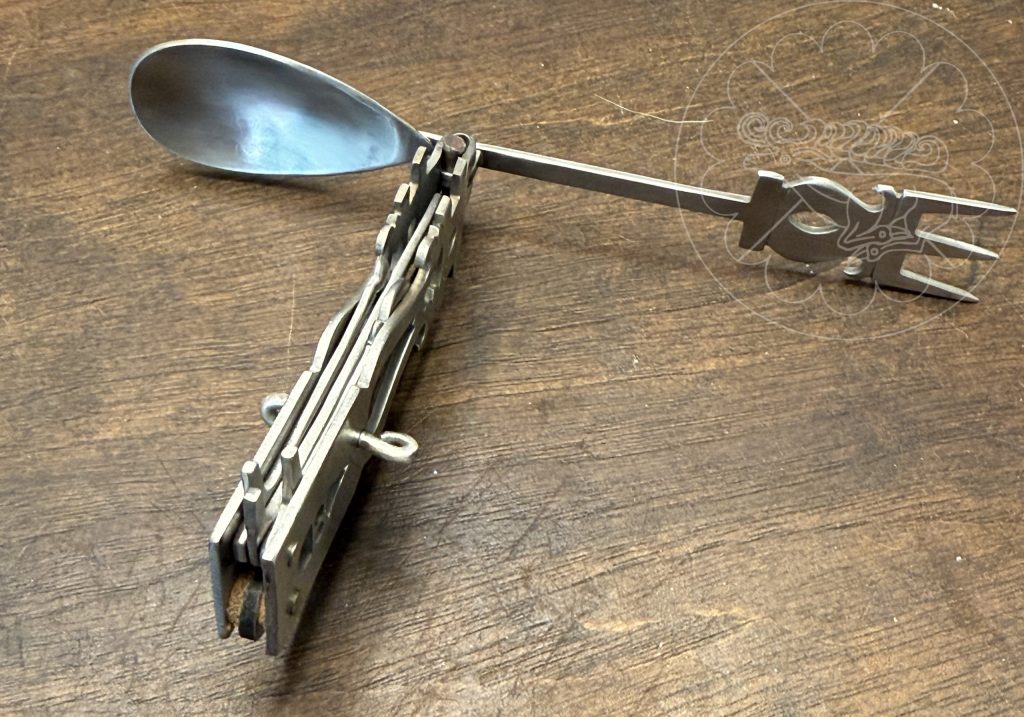
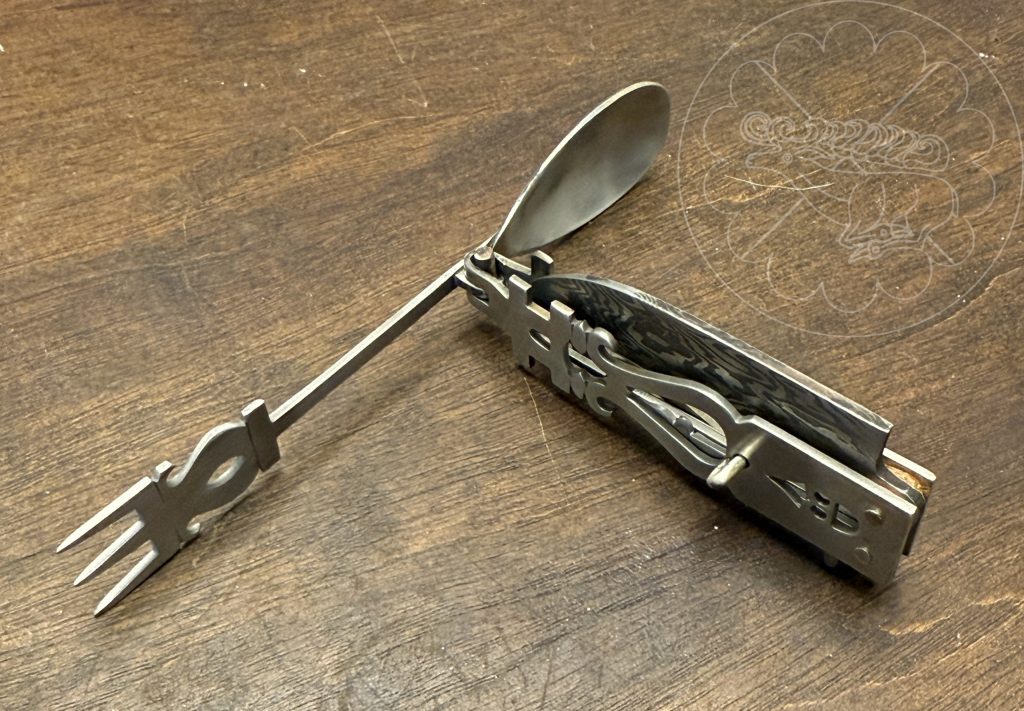
The final piece is quite compact, ~13.2mm (5.2″) long with the spoon extended & should fit easily into pouch. All the tools articulate well and overall it’s a very clever, fun gadget which was a very fulfilling project to make.
